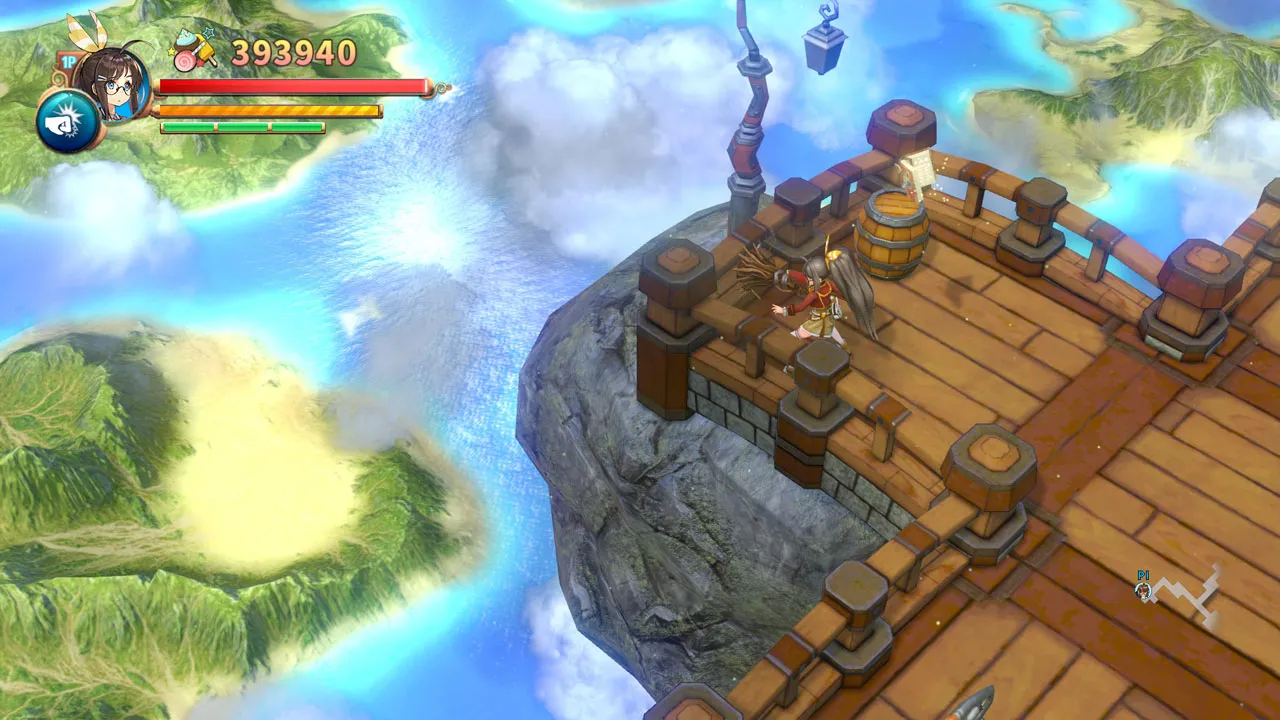
RemiLore: Lost Girl in the Lands of Lore – A Fun but Frustrating Hack-and-Slash Adventure
RemiLore: Lost Girl in the Lands of Lore, developed by REMIMORY and published by Nicalis, is a prime example of Japanese game design’s unique blend of charm and quirky chaos. Released in 2019 on Nintendo Switch, PlayStation 4, and later on Steam, RemiLore offers a vibrant hack-and-slash experience with rogue-like elements. However, its reception has been mixed, with praise for its satisfying combat countered by criticisms of its design choices. Let’s delve into what makes RemiLore both enjoyable and frustrating.
Fluid and Satisfying Combat
At its core, RemiLore is an isometric action game with rogue-like progression. Each level is procedurally generated, creating a network of interconnected rooms and pathways that change with every playthrough, adding replayability.
The game’s greatest strength lies in its fluid and engaging combat. With two attack buttons, players can chain together endless combos of powerful attacks. The order of button presses isn’t overly important, allowing for intuitive and exhilarating combat. A dedicated dodge button adds further depth, enabling both evasion and quick closing of distance. RemiLore excels at delivering impactful blows and a sense of momentum during combat.
 RemiLore
RemiLore
RemiLore offers six distinct weapon types: single swords (default), hammers, fists, staves, greatswords, and dual swords. Each weapon possesses unique attack patterns and requires practice to master. For example, single swords offer speed and range but lack power, while hammers deliver devastating blows but are slow and unwieldy.
Adding a touch of humor, weapons are tiered from D to S rank. Lower-tier weapons are often ordinary household items like brooms, tennis rackets, frying pans, and sewing needles. This creates amusing scenarios, such as watching Remi poke enemies with an umbrella. The novelty of these low-tier weapons sometimes outweighs their reduced combat effectiveness.
Visually Stunning World
For a game from a smaller studio, RemiLore boasts surprisingly impressive visuals. The vibrant color palette and anime-inspired art style create a world that is both mystical and charming. The dynamic time-of-day system, cycling through day, sunset, and night, enhances the visual experience.
Ragnoah, the game’s setting, is a world suspended in the sky. Players can gaze down upon a breathtaking panorama of clouds, oceans, and continents. Ragnoah itself is a visual marvel, transitioning between ancient academies with stone walls and wooden hallways and lavish resorts complete with BBQ grills and colorful lounge chairs. The environments alone make RemiLore worth exploring.
Character and enemy designs are another highlight. Remi and Choux, the two playable characters, each have a wardrobe of costumes to unlock, providing both visual variety and a sense of progression. Enemies, though not numerous, are well-designed, ranging from hulking robots wielding massive hammers to heavily armed war machines.
The hundreds of unique weapons also deserve mention. Beyond the comical low-tier options, the A and S rank weapons are visually stunning, resembling mythical artifacts. From glowing swords with intricate engravings to fiery hammers and crackling electric fists, RemiLore delivers a feast for the eyes.
Design Shortcomings
Unfortunately, RemiLore’s strengths are offset by significant design flaws. The short playtime is a major drawback. While the rogue-like structure encourages replayability, the brief story (four worlds, 12 standard levels, and five boss fights, totaling about two hours) leaves players wanting more. The lack of substantial narrative content adds to this disappointment.
The difficulty also poses a challenge. While players can lock onto targets, evading attacks from multiple enemies can be overwhelming. Furthermore, enemies can also lock onto the player, leading to frustrating situations where the player is pinned down and unable to escape.
The healing system is another point of contention. There are no active healing options; players must rely on rare health drops from enemies or purchase healing at the end of levels. This makes recovering from significant damage a gamble, often leading to unavoidable deaths. The harsh penalty of restarting a world upon death further exacerbates this issue.
Finally, the weapon special attacks are poorly balanced and overly reliant on RNG. Out of the nearly 20 available special attacks, only a few are truly useful. The random assignment of special attacks to weapons can make or break a run, forcing players to use suboptimal weapons solely for their powerful special attacks.
Conclusion
RemiLore: Lost Girl in the Lands of Lore offers a visually stunning and mechanically satisfying hack-and-slash experience. However, its short story, frustrating difficulty spikes, and poorly balanced design choices hold it back from its full potential. While the core gameplay loop is enjoyable, the game’s flaws can quickly lead to frustration.
- Developers: Pixellore, Remimory
- Publisher: Nicalis
- Genre: Action
- Release Date: February 26, 2018
- Platforms: PC, PlayStation 4, Xbox One, Nintendo Switch





Comments (0)